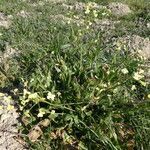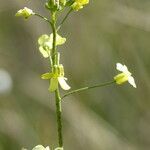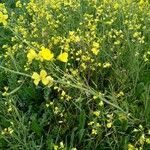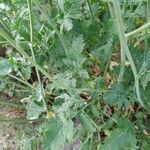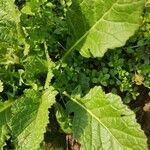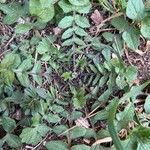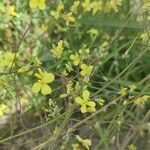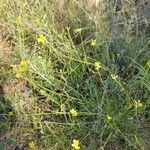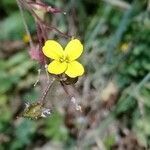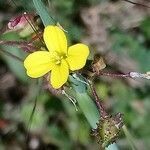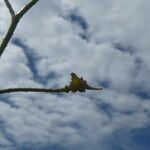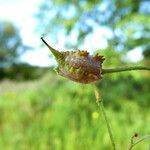A cabbage family herb. It is an annual plant. It is rough and hairy. The leaves have lobes along the side. The edges are wavy. The flowers are yellow. The petals are notched. The fruit is about 1 cm long and has toothed wings on the angles. It is square in cross section.
A hispid and glandular European annual or biennial, is locally intr. in Pa. and Va. It has pet 8–13 mm and 4-winged frs 10–12 mm.
